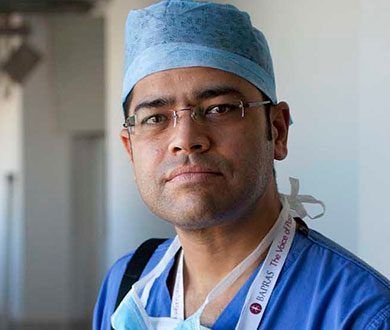Undergoing plastic surgery is a significant decision, and while the results can be transformative, one common concern for many of Mr Cavale’s patients is post-surgery scarring. Although some degree of scarring is inevitable, proper care and the right techniques can significantly reduce their appearance. This guide will explore why scars form, the factors that influence healing, and Mr Cavale’s top tips on the best ways to minimise scarring after surgery.

Why Does Post-Surgery Scarring Occur?
Scars are a natural part of the body’s healing process. When the skin is injured - whether from an incision, injury or burn - the body produces collagen to repair the wound. The way a scar forms depends on multiple factors, including the depth of the incision, the individual’s skin type and how well the wound is cared for post-surgery.
Factors That Influence Scarring
Several factors affect how noticeable a scar may be, including:
- Genetics – Some individuals are more prone to keloid or hypertrophic scarring due to their genetic makeup.
- Skin Type and Colour – Darker skin tones may experience hyperpigmentation, while lighter skin may develop more visible raised scars.
- Type of Surgery and Incision Placement – The size and location of an incision play a role in how a scar develops. Surgeons often aim to place incisions in less visible areas where possible i.e. under the breast when performing a breast augmentation or close to the ear when performing a face lift.
- Post-Operative Care – How a wound is cared for during the healing process greatly impacts the final appearance of a scar.
Understanding the above can help patients have realistic expectations and take proactive steps to improve the healing from their surgery.
Best Practices for Minimising Post-Surgery Scarring
While complete scar prevention is impossible, there are several ways to encourage optimal healing and reduce the appearance of post-surgery scarring.
Follow Your Surgeon’s Instructions
One of the most crucial steps in scar management is adhering to post-operative care instructions that Mr Cavale provides. This may include:
- Keeping the incision clean and dry – and also follow showering/bathing instructions
- Avoiding excessive movement to prevent stretching the scar
- Taking prescribed medications to reduce inflammation
Exact details/information on post-operative care will be provided by Mr Cavale and his team before you go home after surgery. You can always get back in touch too if you’re unsure about anything.
Keep the Wound Moisturised
Once healed, applying a suitable post-surgical ointment or silicone-based gel can help keep the wound hydrated, promoting better healing. Silicone sheets and gels are particularly effective in reducing scar thickness and discolouration. Again, this will be covered by Mr Cavale in your post-op instructions, as each patient’s recovery recommendations are individual.
Protect the Scar from Sun Exposure
UV exposure can darken scars and make them more noticeable. Patients should keep their scars covered or apply a broad-spectrum sunscreen of at least SPF 50 to prevent hyperpigmentation from developing. Scars are susceptible, like ‘baby skin’, especially for the first few years, to sun damage.
Maintain a Healthy Diet and Hydration
Proper nutrition plays a vital role in skin repair. Consuming foods rich in vitamins C and E, zinc, and protein can promote collagen production and aid in scar healing.
Advanced Treatments for Scar Reduction
For patients who are concerned about persistent or pronounced scarring, several medical treatments can help improve their appearance. A lot of Mr Cavale’s patients often book the below alongside their surgery to ensure the very best results when it comes to scar management:
- Laser Skin Resurfacing – Bespoke settings on the lasers used at Mr Cavale’s clinic can help to smooth out raised scars and reduce redness.
- Microneedling – Small microwounds are created in the skin to encourage collagen production to blend scars with the surrounding skin.
- Surgical Scar Revision – This is a procedure where a scar is re-excised and stitched more precisely to create a less noticeable result. This has never happened with one of Mr Cavale’s patients, but he has employed this technique when patients come to him who are unhappy with the scarring from treatment elsewhere.
Consulting with a qualified plastic surgeon can help determine the most suitable treatment for specific scar types.
In summary, post-surgery scarring is a natural part of the healing process, but with the right care and techniques, its appearance can be significantly minimised. By following Mr Cavale’s advice, protecting the scar from sun exposure, and considering advanced treatments where necessary, patients can enjoy the best possible results from their surgery. To book in for a consultation with Mr Cavale, contact us.











